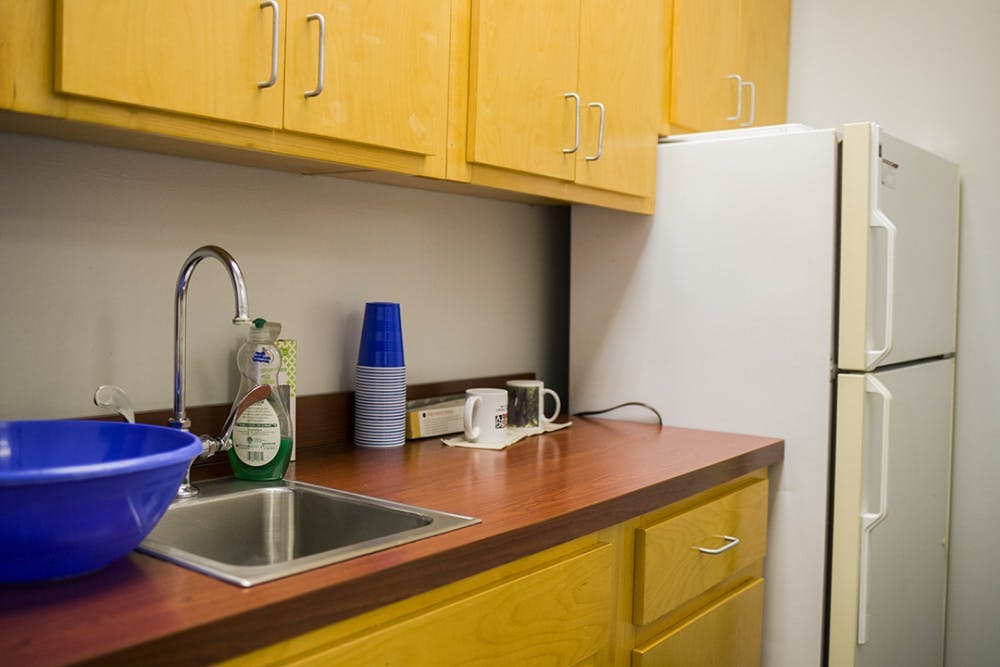Although kitchens are common in residence halls, students cooking for themselves seems subtly discouraged. Things promoting this attitude include a lack of kitchen space and a required meal plan.
Staying well-fed is a constant logistical process that becomes more complex when cooking your own meals. The ability to manage all the required parts is deteriorated even further when the only items available are one personal refrigerator and microwave along with one common area refrigerator and stove for a full floor, or even an entire building. This is the situation of students in residence halls.
To consistently feed yourself there are a few things you need: time, money and supplies. Particularly as a freshman, all of these are things that living in a residence hall leaves you short on.
South Tower, for example, has 423 students throughout its 17 floors of living space. Aside from the amenities the students are allowed in their rooms, each floor has one stove and full size refrigerator per floor. That means 24 people need to share one stove.
Logistically, if each person wanted to have two cooked meals a week and each meal takes about an hour to cook, stove usage would need to be on a tight schedule. As an example, in order to hit 48 hours of cooking time, residents would need to be constantly cooking from 4 p.m. to 9 p.m. Monday through Friday and from about 9 a.m. to 9 p.m. on Saturday and Sunday.
In addition to that nightmare of a schedule, residents will have a hard time finding storage space for their week’s supply of leftovers and the ingredients that they will be using throughout the week. Aside from leftovers, the typical personal refrigerator is likely to have some various items to support a quick breakfast along with sandwich supplies in case food or time runs low during the week. Considering the university limits that refrigerator to 3.3 cubic ft., and with only one full size refrigerator for the entire floor, storing vegetables and meats for use once the stove is free is looking like an unobtainable luxury.
To fix these issues, the university could renovate the electrical grid in residence halls. Common areas could be equipped with a few more full size refrigerators and stoves to support the floor along with extra cabinet space for the cooking supplies that will be needed. If space is an issue, converting an existing dorm room into another common area would fix that. If security is an issue, storage space can be kept private with locks.
Instead, the university appears to have fixed the problem by requiring freshman who live on campus to purchase meal plans but these have a few problems of their own.
Top among the issues is the cost. The cheapest meal plan is $1,687 per semester. That is about $400 a month on food. To put that into perspective, I spend about $175 per month at my local grocery store.
So not only is a meal plan forcing students to pay far too much money for food, but it is food that does not change on a weekly basis. The Russell House always has the same restaurants in it.
Another side effect of forcing on-campus freshmen to purchase a meal plan while not updating common area kitchens is that the residents are not encouraged to learn the ins and outs of cooking before they move off campus.
According to a recent Twitter poll by The Daily Gamecock, nearly 70 percent of residents either rarely or never use their common area’s kitchen.
While the intent may be to ease students in slowly to their new life, living in residence halls with adequate facilities would afford them the opportunity to learn from their more knowledgeable peers in an area they may be weak on.
So while residence hall kitchens seem like a nice gesture on the surface, as long as they are not improved they are only wasting floor space while the meal plans waste student money.

